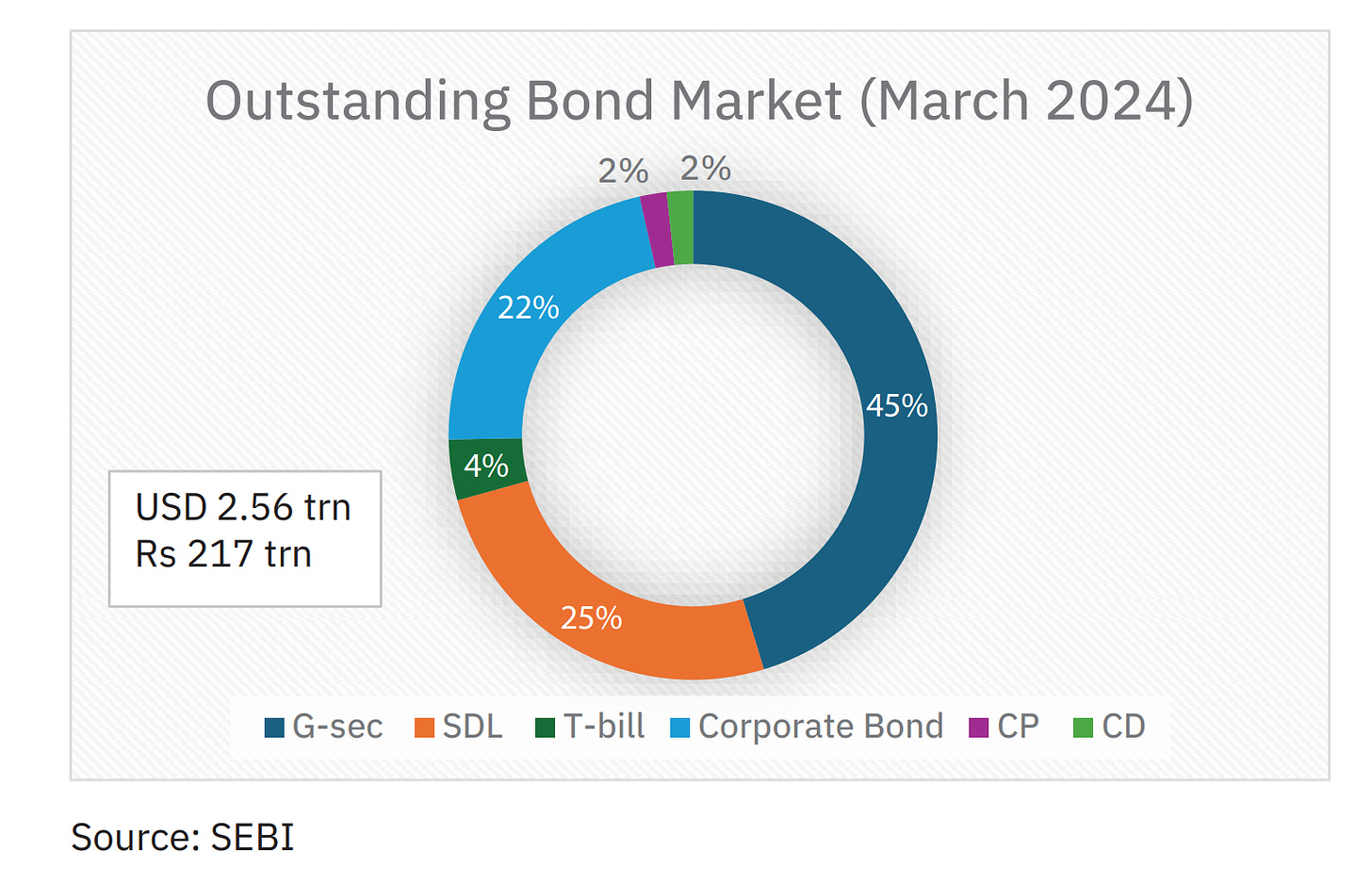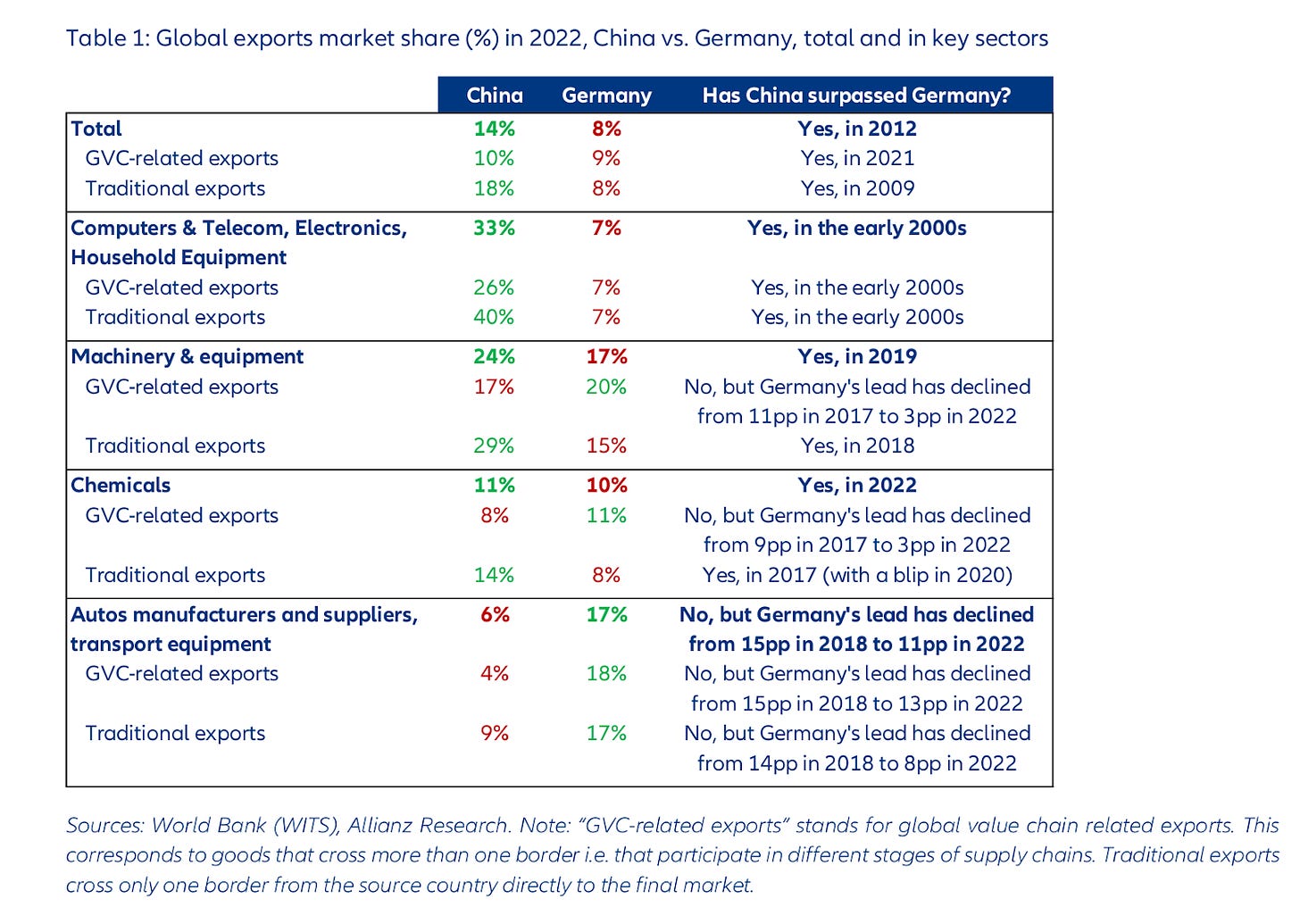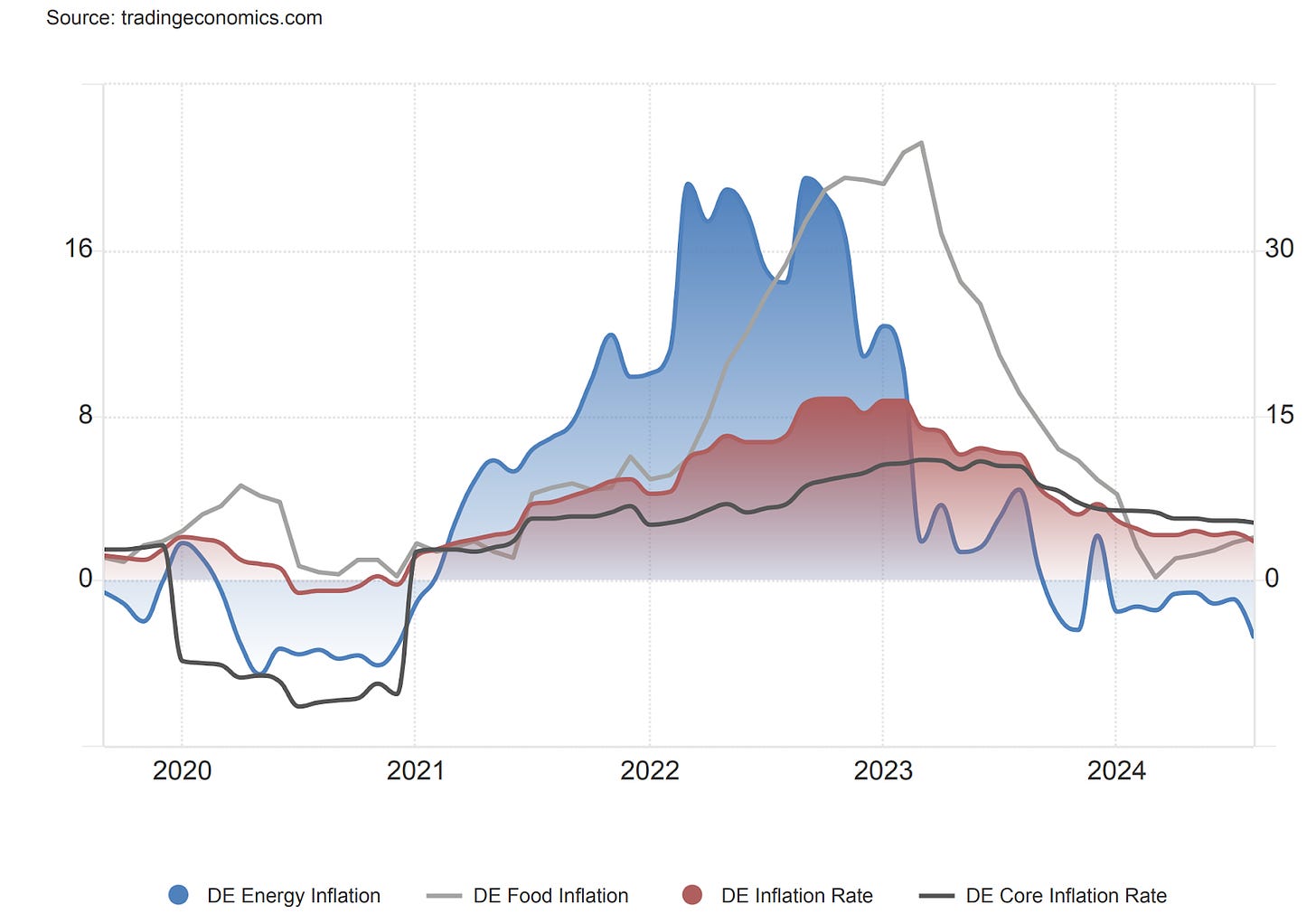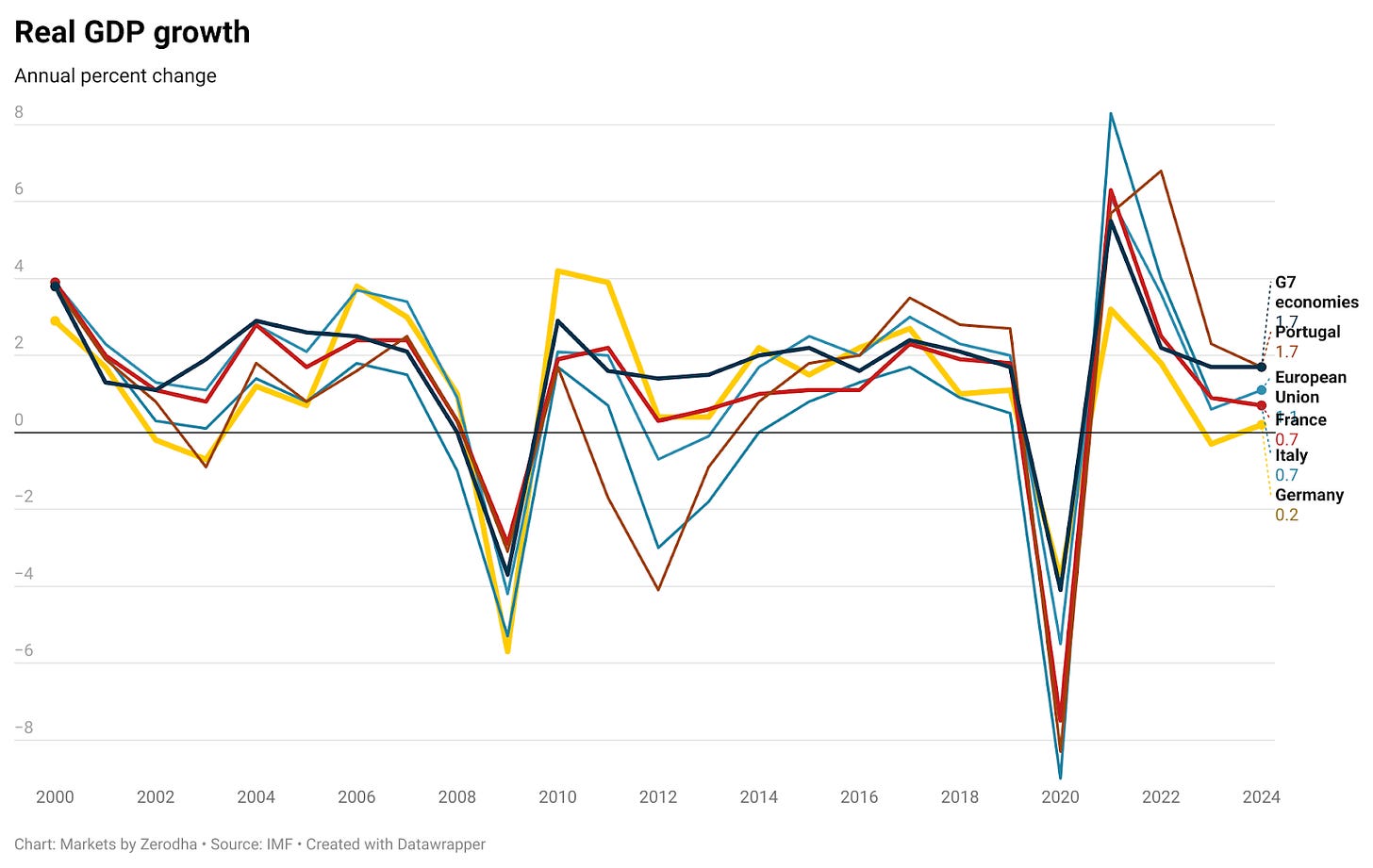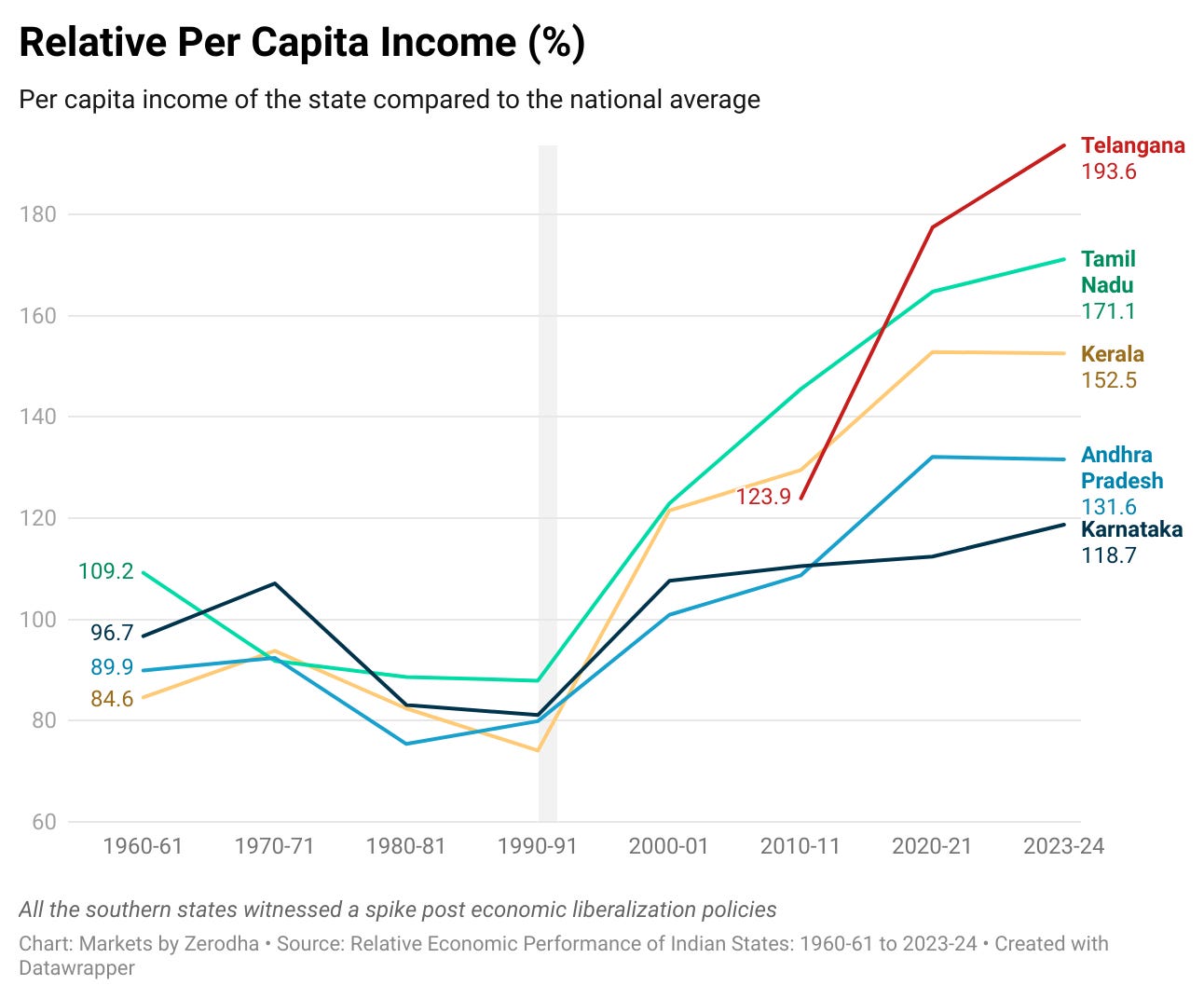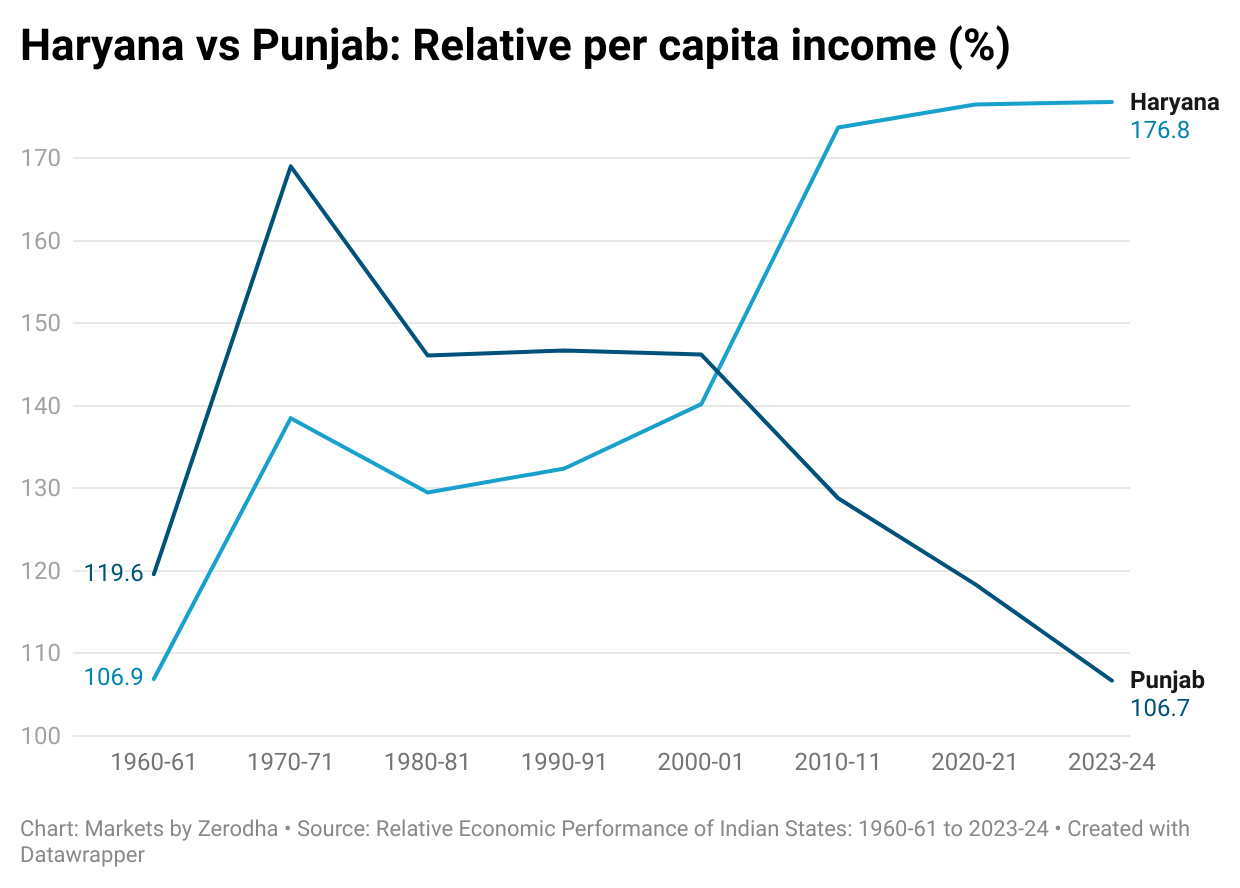Our goal with The Daily Brief is to simplify the biggest stories in the Indian markets and help you understand what they mean. We won’t just tell you what happened, but why and how too. We do this show in both formats: video and audio. This piece curates the stories that we talk about.
You can listen to the podcast on Spotify, Apple Podcasts, or wherever you get your podcasts and video on YouTube.
You can also listen to The Daily Brief in Hindi.
Today on The Daily Brief:
- Mutual funds want to become Michael Burry
- The fall of Europe’s industrial giant
- India is doing well, but what about the states?
Mutual funds want to become Michael Burry
SEBI recently announced that mutual funds can now buy and sell insurance for bonds, known as Credit Default Swaps (CDS). Let’s break down what this means and why SEBI is doing it.
The Indian bond market is huge, worth around ₹215 lakh crores, but it’s mostly filled with government bonds, which make up about 75%. Corporate bonds only make up 22%, which is quite small for a country with big growth ambitions like ours.
So, why does this matter to you?
Well, if companies aren’t raising money through corporate bonds, they’re relying heavily on bank loans. While that works for a while, it’s not a long-term solution, especially for a growing country like India. We need a thriving corporate bond market to give companies another way to raise money. But despite efforts from SEBI and the government, our corporate bond market hasn’t picked up much, mainly due to a weak CDS market. Even though CDS has been around since 2011, it hasn’t really taken off.
To change this, the RBI made a significant move in 2022, allowing mutual funds to not just buy but also sell CDS. Previously, mutual funds could only buy CDS in fixed maturity plans (FMPs), which are close-ended funds that few people invest in today. In fact, 99% of mutual fund investments are in open-ended funds, making FMPs not very effective for CDS activity.
However, in June 2024, SEBI allowed all mutual funds to buy and sell CDS, hoping this would revitalize the corporate bond market.
So, what exactly is a CDS?
Imagine you’re a mutual fund manager, and you’ve bought a corporate bond expecting regular returns. But there’s always a risk—what if the company can’t pay back? That’s where CDS comes in, acting like car insurance but for bonds. If the company defaults, the CDS seller covers your losses.
When a mutual fund sells CDS, they’re essentially saying, “If this bond defaults, we’ll cover the loss.” In return for taking on that risk, they get paid a premium. But SEBI has put strict rules in place: funds can only sell CDS if they have enough safe assets—like cash, government bonds, or treasury bills—to back up their promises. If a bond defaults, they need enough reserves to cover the loss without risking their whole portfolio.
Selling CDS involves some risk, but it also allows mutual funds to diversify. They can combine CDS sales with safe assets, aiming for higher returns while managing risk better.
Why does this matter to everyday investors like us?
For us, it’s a win-win. Mutual funds now have another tool to manage risk, which can protect your money from bad bonds. Remember when companies like IL&FS, DHFL, or Reliance ADAG defaulted, and investors lost a lot of money? If mutual funds had used CDS, those losses could have been minimized.
By selling CDS, mutual funds can also potentially earn more, offering better returns by taking on calculated risks. This added flexibility can lead to more stable and higher returns for investors. Plus, if more funds start using CDS to manage risk, it could finally give a boost to India’s corporate bond market, making it easier for companies to raise money and making the market more active.
The fall of Europe’s industrial giant
Germany’s economy is going through a rough time, and it’s not just their problem—it affects both India and the global economy.
For some context, Germany is Europe’s largest economy and the world’s fourth-largest. They make up 25% of the Eurozone’s GDP and are the third-largest exporter globally. For India, Germany is our sixth-largest trading partner. So, when Germany struggles, the ripple effects are felt everywhere.
Germany has always been known for its industrial strength, with brands like BMW, Siemens, and BASF. But now, this industrial giant faces two major challenges: the rise of China and the global push for a green economy.
First, let’s talk about China. For years, China was Germany’s top trading partner. But now, China isn’t just buying German goods—it’s competing with them. China has moved up the value chain, grabbing market share in advanced industrial sectors and pushing European products out of its own market. From 2000 to 2022, China’s global export share jumped from less than 4% to 14%, while Germany’s share dropped from 10% to 8%.
Germany’s machinery exports to emerging markets have fallen by 23% since 2019, while Chinese exports to the same regions have grown by 89%. And it’s not just about market share; China is now a strong competitor in high-tech sectors like the auto industry. While German carmakers were slow to adopt electric vehicles (EVs), Chinese companies like BYD are already leading the way in China and even in Europe.
Source: Allianz
The second challenge is the green economy transition. Germany’s industrial base relies heavily on energy-intensive manufacturing, mostly powered by cheap Russian gas. But with the war in Ukraine cutting off that supply and a global shift toward decarbonization, German industries are struggling. Energy costs have skyrocketed, particularly affecting sectors like steel, chemicals, and glass. Some companies are even considering moving production to places with cheaper energy.
Germany’s auto industry is especially vulnerable. The shift to EVs isn’t just a change in technology; it’s a complete overhaul of the industry. Germany’s expertise in making complex combustion engines doesn’t carry over to EVs, where the focus is on software and batteries—areas where Germany lags.
Inflation is another issue. After the Russian energy shock, inflation in Germany hit a high of 11.6% in 2022—the highest since the 1950s. Although it’s eased a bit, it’s still hurting consumer spending and putting pressure on wages.
Germany is also facing a labor crisis. In the next five years, 2 million workers are expected to retire, creating a massive gap in a country already short on skilled workers. Right now, there’s a shortage of nearly 600,000 skilled workers. If this gap were filled, it could boost Germany’s growth by more than 1% this year alone.
On top of that, there’s Germany’s notorious bureaucracy. Getting a business license takes around 120 days—twice the OECD average. In today’s fast-paced world, this red tape is a serious disadvantage.
All these factors add up to a tough economic outlook. Germany’s economy shrank by 0.3% in 2023, and the IMF predicts it will be the worst-performing major economy in 2024, with GDP expected to shrink by another 0.5%.
Germany has faced tough times before. In the early 2000s, it was called the “sick man of Europe,” but reforms helped turn things around. This time, however, the challenges run deeper. It will take more than quick fixes to pull Germany out of this rough patch.
India is doing well, but what about the states?
When we talk about India’s economic performance, we often think of the country as a whole. But the real story varies a lot depending on where you are. So today, we’re diving into how different regions in India have fared economically over the last few decades. There’s a lot to cover, but let’s keep it simple—just the big picture to help you understand what’s happening across India’s states.
Let’s start with the regions leading the charge: the south and the west.
Since the economic reforms of 1991, southern states like Karnataka, Tamil Nadu, and the newly formed Telangana have been pulling ahead. Together, they contribute about 30% of India’s total GDP. That’s a big leap, especially considering these states weren’t always economic powerhouses. Telangana, for example, stands out with a per capita income nearly double the national average.
Western states like Maharashtra and Gujarat have been at the forefront for a long time. Maharashtra still holds the largest share of India’s GDP at around 13%, while Gujarat has been catching up fast, now accounting for 8.1% of the GDP. Gujarat is also one of the top states in terms of per capita income.
But not all regions have seen this kind of growth.
In the north, Punjab—once an agricultural leader—has struggled to diversify its economy. Since the 1990s, its growth has slowed, and its per capita income is just a bit above the national average. In contrast, neighboring Haryana has surged ahead, particularly after liberalization. Although Punjab and Haryana were once part of the same state and both benefited from the Green Revolution, they’ve taken different paths since 1991. Today, Haryana’s per capita income is among the highest in the country, while Punjab’s reliance on agriculture might have held it back from industrial growth.
Moving east, West Bengal has seen one of the steepest declines. Back in the 1960s, it was the third-largest economy in India, contributing 10.5% to the national GDP. Today, that number is down to just 5.6%. West Bengal’s per capita income, once above the national average, now lags at 83.7%. Meanwhile, Odisha, historically one of the poorest states, has made a significant turnaround since the 2000s, with its per capita income growing to 88.5% of the national average.
Now, let’s look at the north-east—a region that often gets overlooked in economic discussions. The star here is Sikkim, which went from being one of the least developed states to having the highest per capita income in the country—320% of the national average. Assam, on the other hand, has had a mixed journey. Its per capita income dropped to 61.2% of the national average in 2010 but has since improved to 73.7% in 2023. Other northeastern states have mostly lagged behind national averages, but Arunachal Pradesh and Tripura have shown growth in recent years.
Heading to Central India, Uttar Pradesh and Madhya Pradesh, two of India’s most populous states, tell a different story. Uttar Pradesh, once an economic engine, has seen a steady decline, now contributing just 8.4% to India’s GDP, with one of the lowest per capita incomes at 50.8% of the national average. Madhya Pradesh, however, has shown some positive signs after decades of underperformance, with its per capita income improving to 77.4% of the national average since 2010. It’s progress, but there’s still a long way to go.
And then there’s Bihar, which has had the lowest per capita income for a long time—just 33% of the national average. While it’s shown signs of economic stabilization recently, the gap with the rest of India remains significant.
So, what sets the successful regions apart? It comes down to a few key factors:
- Economic Liberalization of 1991 : Southern and Western states embraced market reforms and attracted foreign investments in IT, manufacturing, and services.
- Infrastructure Development : Gujarat and Maharashtra invested in ports and roads, while Karnataka and Tamil Nadu built strong IT infrastructure.
- Business-Friendly Policies : States like Gujarat and Tamil Nadu offered incentives and streamlined processes, making it easier for businesses to set up.
- Skilled Workforce and Education : Southern states invested in education and healthcare, creating a productive workforce. Karnataka became a hub for engineering talent.
- Global Trade and Maritime Access : Coastal states like Maharashtra, Tamil Nadu, and Gujarat leveraged ports for export growth in sectors like automobiles, textiles, and pharmaceuticals.
- Political Stability and Governance : States like Gujarat, Tamil Nadu, and Odisha enjoyed periods of stability, allowing for consistent policy implementation. Odisha saw a significant turnaround due to stable leadership focusing on industrial growth and infrastructure.
- Tourism and Services : Kerala and Goa’s strong tourism industries contributed to economic growth, with Kerala focusing on eco-tourism and wellness tourism.
But not everything was smooth across India. Some states struggled due to missed opportunities and structural issues:
- Overdependence on Agriculture : Punjab and Bihar remained too reliant on agriculture. Punjab, once a leader, failed to diversify and saw its share of national GDP shrink.
- Delayed Industrialization : West Bengal’s decline is tied to slow reforms and industrial growth. Its contribution to GDP fell sharply as it missed out on economic liberalization.
- Political and Policy Instability : Bihar and Uttar Pradesh suffered from political instability and weak governance, which slowed their economic growth.
- Missed Opportunities in Manufacturing : Kerala relied heavily on remittances rather than industrial growth, limiting its economic potential.
- Bifurcation and Fragmentation : The division of states like Bihar and Andhra Pradesh disrupted their economic paths, with Bihar’s GDP share stagnating post-split.
In summary, the south and west of India are leading the economic charge, with Maharashtra, Gujarat, and southern states showing strong growth. The northeast, led by Sikkim, is experiencing positive changes, while Central India is slowly catching up. The north has bright spots like Haryana, but Punjab and West Bengal have struggled, and Bihar remains a challenge, albeit with some hope for the future.
These economic stories go beyond numbers; they reflect policy choices, historical influences, and global trends that shape everyday life.
Tidbits:
- The recent Modi-Biden meeting strengthened India-US relations with key agreements on semiconductor manufacturing, AI, defense, and a $1 billion clean energy collaboration, highlighting their growing strategic alliance.
- Intel missed the AI chip boom, allowing rivals like Nvidia to surge ahead. Now, Qualcomm might be eyeing a takeover, and Apollo Global Management could invest up to $5 billion.
- Amazon and Flipkart are under a CCI investigation that could lead to hefty fines—up to 10% of their global revenue—depending on their financial disclosures about anti-competitive practices.
- Vodafone Idea plans to invest $3.6 billion to upgrade its 4G network and roll out 5G, but it’s still uncertain whether this will be enough to solve its financial challenges.
Thank you for reading. Do share this with your friends and make them as smart as you are ![]()
If you have any feedback, do let us know in the comments


